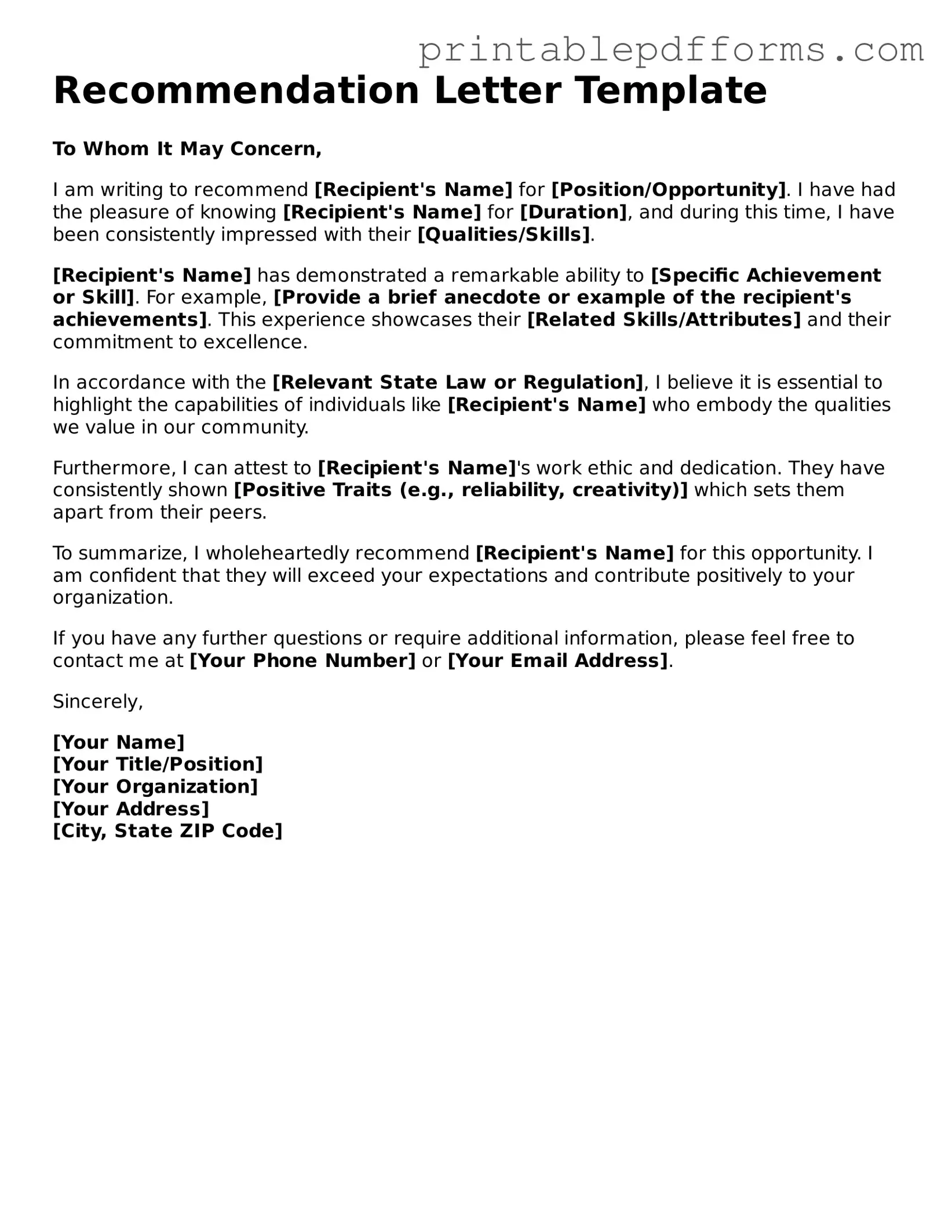Recommendation Letter Template
To Whom It May Concern,
I am writing to recommend [Recipient's Name] for [Position/Opportunity]. I have had the pleasure of knowing [Recipient's Name] for [Duration], and during this time, I have been consistently impressed with their [Qualities/Skills].
[Recipient's Name] has demonstrated a remarkable ability to [Specific Achievement or Skill]. For example, [Provide a brief anecdote or example of the recipient's achievements]. This experience showcases their [Related Skills/Attributes] and their commitment to excellence.
In accordance with the [Relevant State Law or Regulation], I believe it is essential to highlight the capabilities of individuals like [Recipient's Name] who embody the qualities we value in our community.
Furthermore, I can attest to [Recipient's Name]'s work ethic and dedication. They have consistently shown [Positive Traits (e.g., reliability, creativity)] which sets them apart from their peers.
To summarize, I wholeheartedly recommend [Recipient's Name] for this opportunity. I am confident that they will exceed your expectations and contribute positively to your organization.
If you have any further questions or require additional information, please feel free to contact me at [Your Phone Number] or [Your Email Address].
Sincerely,
[Your Name]
[Your Title/Position]
[Your Organization]
[Your Address]
[City, State ZIP Code]
